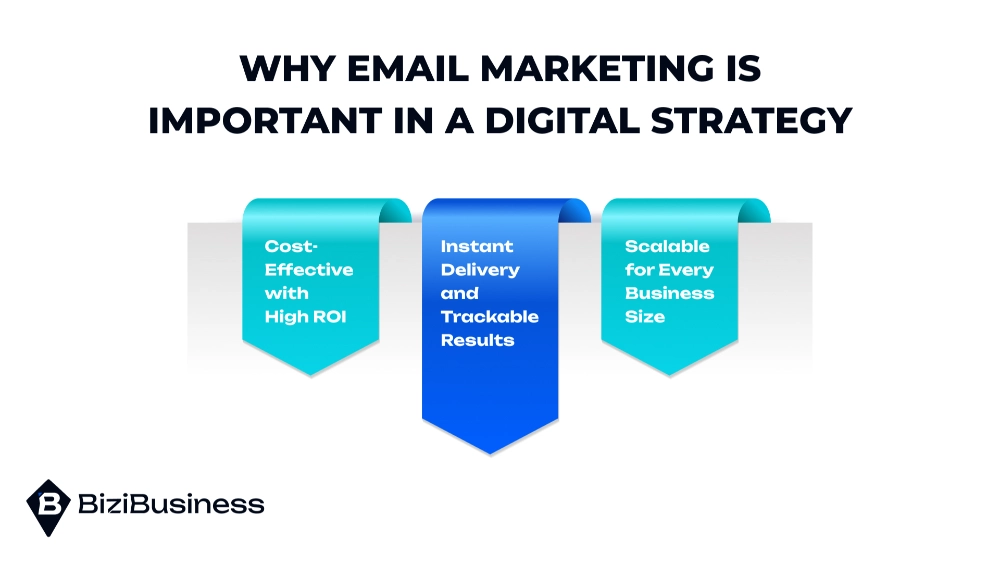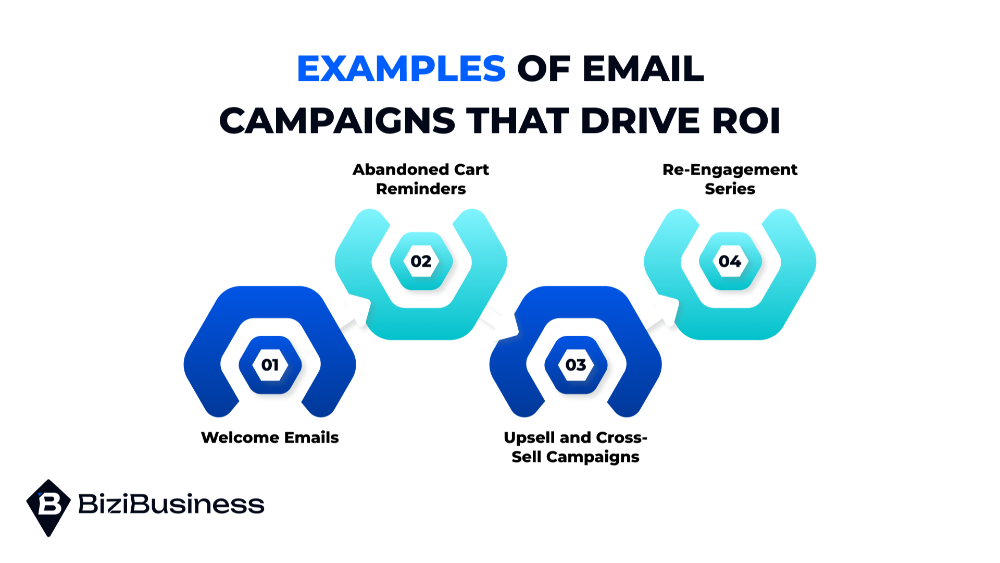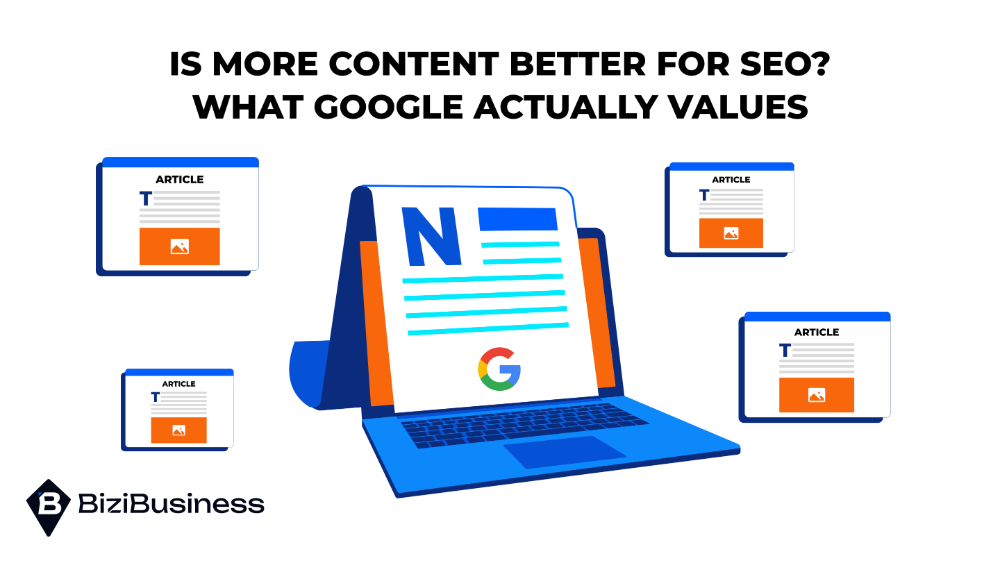Contents
Learn why email marketing is important and how it delivers real ROI. Discover the benefits that make it a top strategy for digital success.
Email continues to prove its dominance as one of the most effective digital marketing channels—despite the rise of social media, AI, and automation tools. So, why is email marketing important in 2025? It remains unmatched in its ability to deliver personalized content, build lasting customer relationships, and generate high ROI with minimal investment. Unlike fleeting ads or algorithm-dependent posts, email offers direct, permission-based access to your audience’s inbox. This article breaks down the enduring value of email marketing, explores how it supports your business goals, and shows you how to harness it for real, trackable results.
What Makes Email Marketing Effective?
Several core strengths make email marketing one of the most impactful strategies in a marketer’s toolkit:

Direct Access to the Inbox
Unlike social media posts that may never reach followers due to changing algorithms, email lands directly in your audience’s inbox. It’s a direct, permission-based line of communication that encourages higher engagement and consistent visibility.
Owned Channel, Not Rented Space
Social platforms are rented spaces. Algorithms can shift, and reach can vanish overnight. Email, by contrast, is an owned channel. You control your list, content, and timing. This stability makes it a reliable asset for long-term marketing.
Personalization and Automation
Email marketing allows for high levels of personalization. You can tailor messages based on user behavior, preferences, or lifecycle stage. Combine that with automation (e.g., welcome series, cart abandonment flows), and you can nurture leads and drive sales around the clock—without manual effort.
Why Email Marketing Is Important in a Digital Strategy
Email marketing remains a cornerstone of any effective digital strategy, thanks to its blend of affordability, efficiency, and measurable impact.

Cost-Effective with High ROI
Few channels rival email when it comes to return on investment. According to industry benchmarks, businesses earn an average of $36–$42 for every $1 spent. With minimal upfront costs and inexpensive tools, email provides powerful performance even on a lean budget.
Instant Delivery and Trackable Results
Campaigns can be sent out instantly to thousands, and performance is easily tracked. Key metrics like open rates, click-through rates (CTR), and conversions offer clear insights into what’s working and what needs improvement.
Scalable for Every Business Size
Whether you’re a solo entrepreneur or a global brand, email marketing scales with your needs. You can start with a basic welcome sequence and grow into automated funnels, segmentation, and A/B testing without overhauling your strategy.
Email Marketing Benefits for Business Growth
Email marketing isn’t just about sending promotions, it’s a strategic tool that supports long-term business growth across multiple touchpoints.

Builds Customer Loyalty and Engagement
Consistent, value-driven emails help you stay top-of-mind with your audience. Whether it’s a monthly newsletter, product updates, or exclusive offers, email keeps customers connected and engaged with your brand over time.
Nurtures Leads Through the Sales Funnel
Email marketing is ideal for lead nurturing. From welcome sequences to educational drip campaigns, it guides potential customers through awareness, consideration, and conversion. Delivering the right message at the right time.
Drives Repeat Business and Retention
It’s more cost-effective to retain existing customers than acquire new ones. Email helps by reactivating dormant customers, promoting loyalty programs, and offering personalized recommendations that increase lifetime value.
Why Is Segmentation Important in Email Marketing?
Segmentation is one of the most powerful ways to improve the performance of your email campaigns. Rather than sending the same message to your entire list, segmentation allows you to deliver content that’s tailored to specific groups.
Delivers Targeted Messages to the Right Audience
By grouping your audience based on behavior, demographics, purchase history, or engagement level, you can send emails that are far more relevant. This increases the likelihood that recipients will open, read, and act on your message.
Boosts Open Rates and Conversions
When people receive content that feels personalized and timely, they’re more likely to engage. Segmented campaigns consistently show higher open and click-through rates, which directly leads to more conversions and better ROI.
Reduces Unsubscribes and Enhances User Experience
Generic emails can feel spammy and irrelevant. Segmentation helps reduce unsubscribe rates by ensuring recipients only receive content that aligns with their interests or stage in the buyer journey, creating a more positive and personalized experience.
Examples of Email Campaigns That Drive ROI
Strategic email campaigns don’t just fill inboxes—they drive real business results. Here are some high-performing campaign types that consistently deliver strong ROI:

Welcome Emails
First impressions matter. A well-crafted welcome email (or series) sets expectations, introduces your brand, and often generates the highest open and click rates of any campaign.
Abandoned Cart Reminders
Send a gentle nudge to customers who didn’t complete their purchase. These automated emails often recover lost sales by offering reminders, incentives, or urgency.
Upsell and Cross-Sell Campaigns
Encourage customers to buy more with relevant product recommendations. Based on previous purchases, these emails can boost average order value and customer lifetime value.
Re-Engagement Series
Don’t let inactive subscribers go cold. Re-engagement emails help reignite interest, clean your list, and maintain high deliverability by targeting subscribers who haven’t interacted in a while.
Common Email Marketing Mistakes to Avoid
Even seasoned marketers can make errors that sabotage their email performance. Avoid these common mistakes to ensure your campaigns deliver maximum value:
Ignoring Segmentation
Sending the same email to your entire list is outdated and ineffective. Without segmentation, your messages risk feeling irrelevant, leading to lower engagement and higher unsubscribe rates.
Sending Too Frequently or Not Enough
Emailing too often can overwhelm your audience and cause fatigue. On the flip side, not showing up enough can make your brand forgettable. Find the right balance based on your audience’s behavior and expectations.
Neglecting Mobile Optimization
A majority of emails are opened on mobile devices. Failing to optimize for smaller screens—such as using small fonts, unclickable buttons, or slow-loading images—results in poor user experience and lower conversions.
Weak Subject Lines or CTAs
Subject lines are your first impression; if they don’t grab attention, your email won’t get opened. Similarly, vague or passive calls-to-actions (CTAs) confuse readers and kill conversions. Be clear, direct, and action-oriented.
Bring It Home: Why Email Still Wins
Email marketing remains one of the most valuable tools in a digital marketer’s arsenal. It’s cost-effective, drives measurable ROI, strengthens customer relationships, and builds long-term brand trust. When done right, with segmentation, automation, and clear strategy, it consistently outperforms other digital channels.
If you’ve been underestimating its potential, now’s the time to re-evaluate your approach. From onboarding sequences to re-engagement campaigns, every email presents an opportunity to educate, convert, and retain your audience.
Looking to optimize your results? Contact us and let’s elevate your email marketing performance to the next level.




